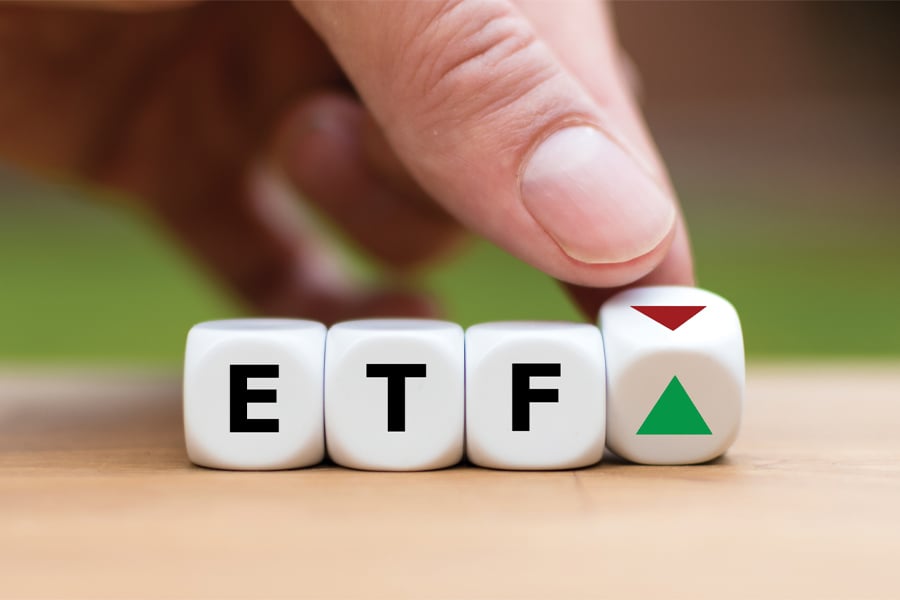

They were pitched as game-changers for the US ETF industry, promising to revive the art of stock picking for Wall Street managers worried their strategies would be aped by copycats.
But four years after their debut, actively managed strategies that only periodically reveal their holdings are enduring a slow demise — and missing out on the massive haul their transparent counterparts are enjoying.
Active non-transparent ETFs (ANTs) — or semi-transparent funds, as they’re also called — have raked in a modest $9 billion in assets since 2020. That accounts for slightly over 1% of the total assets in actively managed exchange-traded funds, according to data compiled by Bloomberg and a team at JPMorgan that includes Bram Kaplan.
Meanwhile, active ETFs overall have accounted for more than 60% of new fund launches in each of the past four years, according to JPMorgan. Over the past year, they have garnered a quarter of all ETF inflows in the US.
Less transparent funds struggling can be condensed to a simple explanation: investors not only like knowing what they own, but also detest paying for something that may have a cheaper alternative.
“Investors want to see holdings. ETFs were built on transparency and this was a step backwards,” said Bloomberg Intelligence’s Athanasios Psarofagis. “The strategies are uninspiring — lots of large-cap-type funds. Most of them hold the same stocks you get in the S&P, and it’s not impressive that you’re hiding the fact that you own Apple.”
To make up for lost ground, fund managers like IndexIQ and Fidelity have been converting some of their semi-transparent ETFs in recent months to more transparent wrappers. They’re following similar moves by Franklin Templeton and Nuveen, the latter of which at the end of last year converted a growth ETF that had at one point boasted the top ranking among these products when it came to assets. A few others are simply shuttering their offerings.
There are a handful of semi-transparent funds seeing inflows this year. Fidelity Blue Chip Growth ETF (ticker FBCG) brought in the most in 2024 — $630 million — followed by the T Rowe Price US Equity Research ETF (TSPA), with $608 million, according to data compiled by Bloomberg.
Still, the cohort’s year-to-date inflows amount to about $2.6 billion, compared with $136 billion for the overall active ETF universe over the same period.
“Indeed, the vast majority of assets and inflows in active ETFs are in transparent active funds,” wrote the JPMorgan team that includes Kaplan, “demonstrating that portfolio transparency need not be an impediment to the success of an active ETF strategy.”
One of the reasons interest in semi-transparent funds has been muted is because of the fees, according to Todd Sohn, an ETF strategist at Strategas. Since this category of funds claims to offer specialized stock-picking expertise, issuers were able to charge more for them. The average fee clocks in at 0.6%, according to data compiled by Bloomberg. That compares with the median 0.5% charged across all ETFs.
“Fees matter in the ETF universe. Semi-transparent ETFs attempted to take what was basically a free, foundational aspect of ETFs — being able to see holdings every day — and remove that,” said Sohn. “That’s like saying your free coffee will now be $5.”

Relationships are key to our business but advisors are often slow to engage in specific activities designed to foster them.

Whichever path you go down, act now while you're still in control.

Pro-bitcoin professionals, however, say the cryptocurrency has ushered in change.

“LPL has evolved significantly over the last decade and still wants to scale up,” says one industry executive.

Survey findings from the Nationwide Retirement Institute offers pearls of planning wisdom from 60- to 65-year-olds, as well as insights into concerns.
Streamline your outreach with Aidentified's AI-driven solutions
This season’s market volatility: Positioning for rate relief, income growth and the AI rebound
